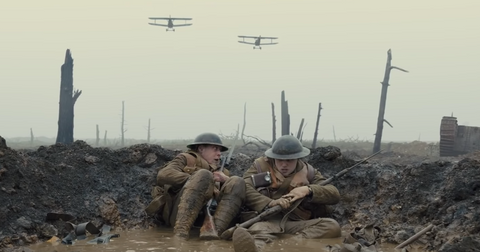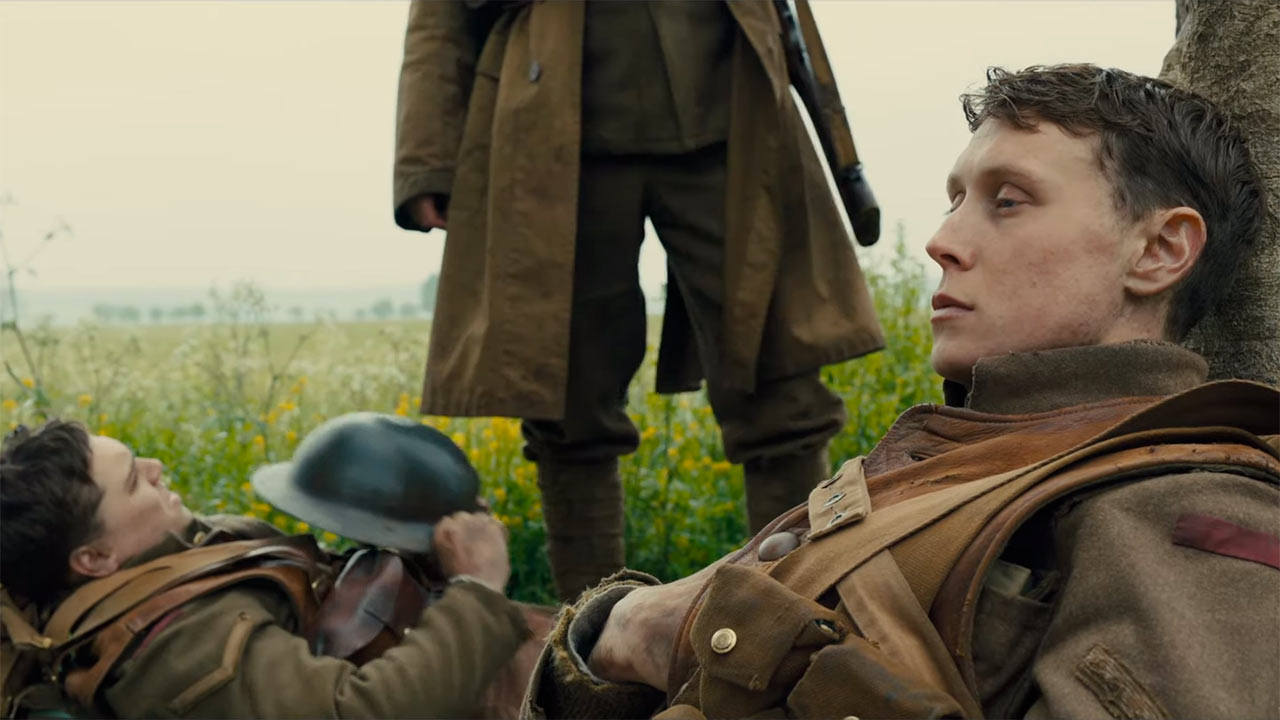In this period of commemoration of the armistice of the First World War. Let's look at Sam Mendes' film, 1917. Released on January 15, 2020 in theaters and is now available on Blu-Ray at Universal Pictures. They immerse us in the hell of the trenches of the Great War through a thrilling staging that oscillates between documentary and fiction. We follow British corporals William Schofield (George MacKay) and Tom Black (Dean-Charles Chapman) as they face the horrors of a war where they are only pawns. Their mission is simple but fraught with pitfalls. General Erinmore (Colin Firth) entrusts them with a task akin to suicide. The lines of communication being cut. They will have to cross the no man's land and bypass the German lines to deliver a vital message to the second battalion of the Devonshire regiment, stationed near Écoust-Saint-Mein. To reach their destination, they will have to brave all dangers to carry out their mission.
1917: A prodigious staging
Oscar-winning director Sam Mendes (American beauty) gives us here through this human adventure a real cinematographic feat. With an almost documentary realism, he signs with this film one of his best works. The challenge of staging based on the use of sequence shots, a true narrative unity in themselves but which require the most meticulous preparation, brings a striking realism to the story. We are like the two young heroes, absorbed and plunged into the hell of the trenches, lost in the middle of the battlefield where death is omnipresent. This immersive feat gives the impression that the events the characters face happen by accident, not because they are foreseen by the script. This gives energy to the film and keeps the viewer in suspense.  This choice of staging would not have been possible without the know-how of cinematographer Roger Deakins (1984, Fargo, No Country for Old Men) who magnifies each scene through a meticulous photograph. This incredibly ambitious project allows the camera to follow the characters as closely as possible. Passing from the trenches where hundreds of soldiers are stationed waiting to mount the assault, on the battlefield strewn with the corpses of men and animals. The off-of-field sound also reminds us that a permanent danger weighs on the two heroes that nothing stops.
This choice of staging would not have been possible without the know-how of cinematographer Roger Deakins (1984, Fargo, No Country for Old Men) who magnifies each scene through a meticulous photograph. This incredibly ambitious project allows the camera to follow the characters as closely as possible. Passing from the trenches where hundreds of soldiers are stationed waiting to mount the assault, on the battlefield strewn with the corpses of men and animals. The off-of-field sound also reminds us that a permanent danger weighs on the two heroes that nothing stops.
Successful character characterization
 Despite the scenes that follow one another with a more or less accentuated rhythm according to the adventures faced by the soldiers, Sam Mendes still manages to give depth to his characters. We gradually get to know them, which accentuates the immersion in the film. This judicious choice provokes in the viewer, an empathy and a desire that they succeed in their mission. This is not easy to perform when you know that the action rarely stops for the duration of the film. We leave the film with a clearer vision of the human sacrifice caused by the First World War. We can better understand the absurdity in which men are plunged in times of conflict. They must constantly achieve the impossible for leaders who perceive the front as an abstract place. Yet it is their name that history remembers. Is this rightly so when we know the sacrifice of the soldiers who won the battles in the trenches?
Despite the scenes that follow one another with a more or less accentuated rhythm according to the adventures faced by the soldiers, Sam Mendes still manages to give depth to his characters. We gradually get to know them, which accentuates the immersion in the film. This judicious choice provokes in the viewer, an empathy and a desire that they succeed in their mission. This is not easy to perform when you know that the action rarely stops for the duration of the film. We leave the film with a clearer vision of the human sacrifice caused by the First World War. We can better understand the absurdity in which men are plunged in times of conflict. They must constantly achieve the impossible for leaders who perceive the front as an abstract place. Yet it is their name that history remembers. Is this rightly so when we know the sacrifice of the soldiers who won the battles in the trenches?


















